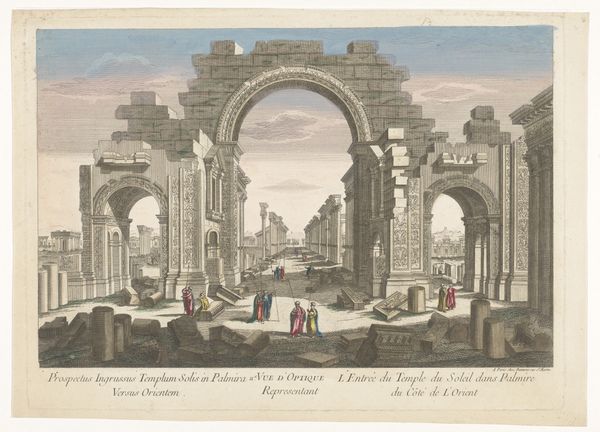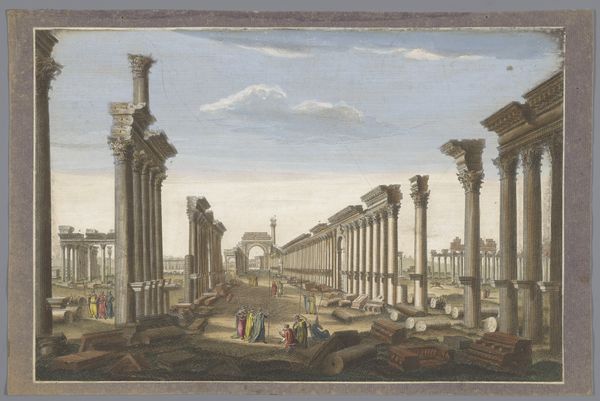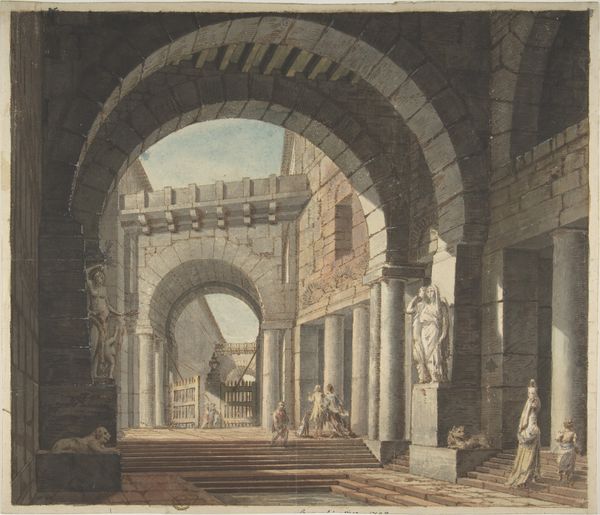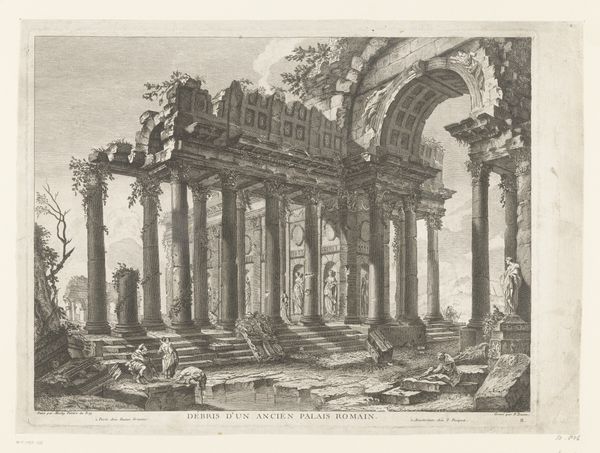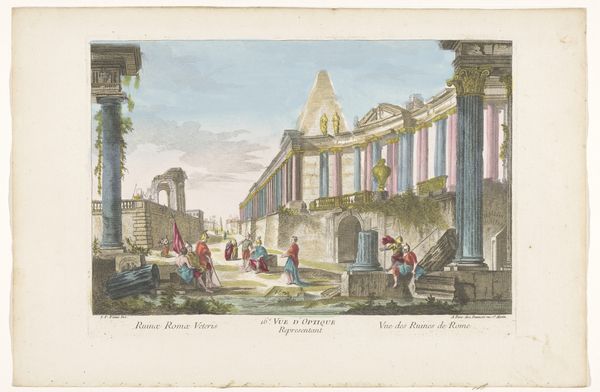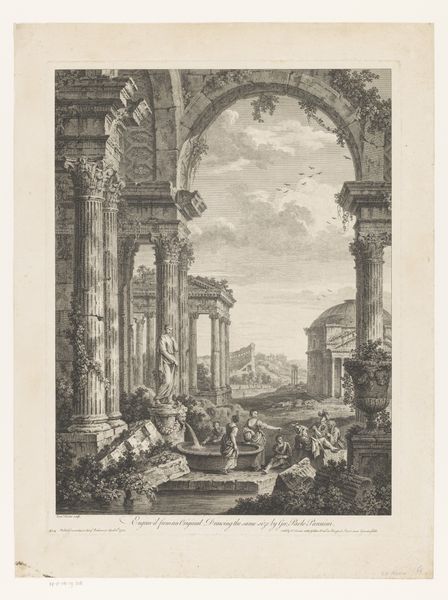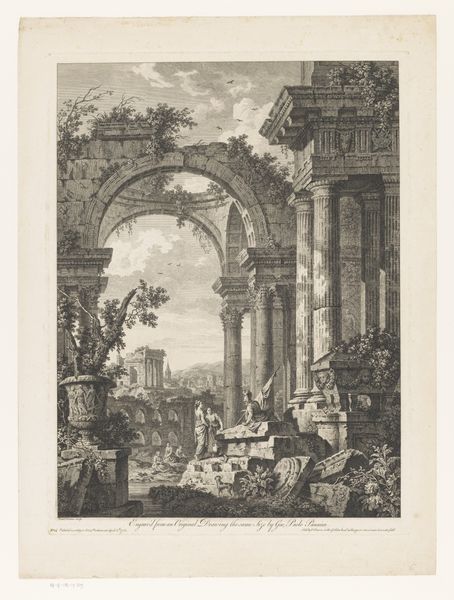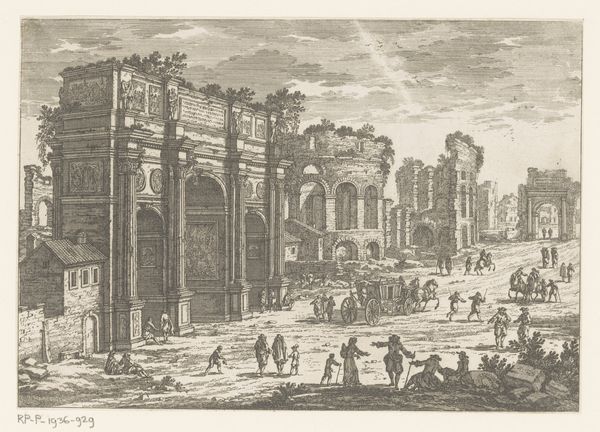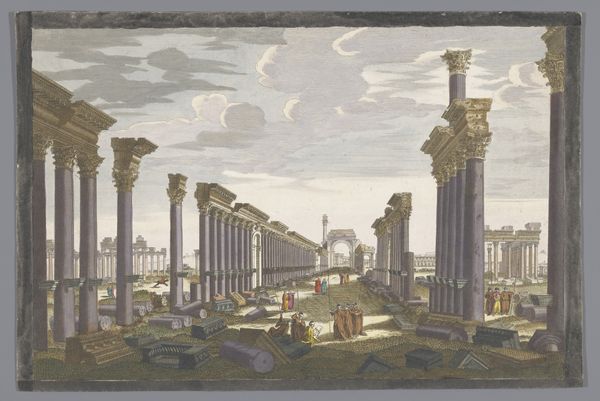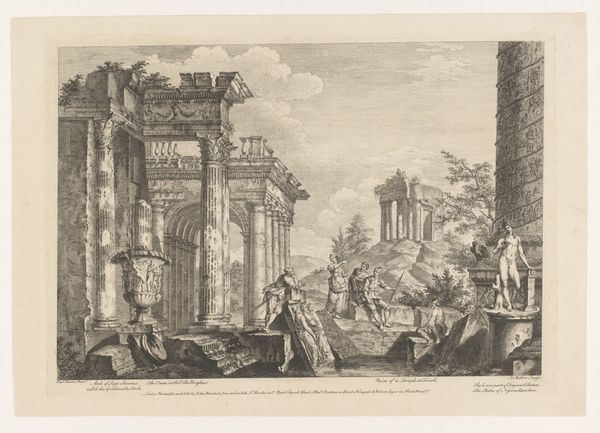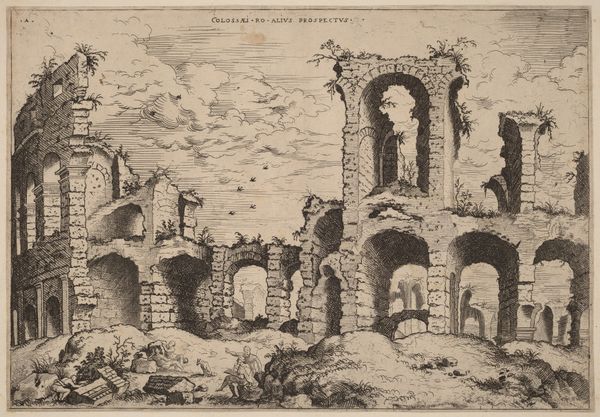
Gezicht op de ruïne van de boog van de zuilengalerij te Palmyra, gezien vanaf de oostzijde 1745 - 1775
0:00
0:00
drawing, watercolor, pencil
#
drawing
#
neoclacissism
#
water colours
#
landscape
#
watercolor
#
coloured pencil
#
pencil
#
arch
#
cityscape
#
history-painting
Dimensions: height 266 mm, width 392 mm
Copyright: Rijks Museum: Open Domain
Curator: Before us is "View of the Ruin of the Arch of the Colonnade in Palmyra, Seen from the East Side," a watercolor and pencil drawing by Jean-François Daumont, created between 1745 and 1775. Editor: My first impression is one of profound stillness. The pale washes and precise lines create a sense of suspended time amidst the grandeur of the ruin. Curator: Daumont’s choice to depict Palmyra speaks volumes. The city, a major trade hub on the Silk Road, represents the intersection of cultures and the inevitable decline of empires. Its ruin speaks to the temporality of power, mirroring anxieties about colonialism and Western dominance during this period. Editor: Notice how Daumont meticulously renders the arch’s decaying stonework, emphasizing texture through hatching and varied pressure of his pencil strokes. This is Neoclassicism at play, using ruins to evoke the weight of history. Curator: Absolutely. Neoclassicism often served to legitimize contemporary power structures by invoking the glory and moral rectitude of antiquity. Here, though, there's a subtle critique embedded in the ruin. The crumbling facade might reflect Europe’s own vulnerabilities amidst sociopolitical unrest. The small figures placed throughout underscore that scale while gesturing at their own possible displacement, suggesting not just an architectural study but an anthropological encounter. Editor: Yes, the carefully balanced composition also suggests a specific engagement with Enlightenment principles: reason attempting to order the chaos of history. But observe the cool, almost detached color palette. Curator: It certainly avoids romanticizing the scene. It encourages us to consider the implications of empire and the costs of conquest. In representing these ruins Daumont's image creates a conversation around ideas of cultural preservation versus cultural exploitation. Editor: Agreed. The precision lends the image a detached air that contrasts with the dramatic subject, allowing the viewer to bring their own interpretations. A fascinating interplay of line, light, and shadow creating a sense of thoughtful melancholy. Curator: Ultimately, this drawing functions as a poignant reflection on the past and, perhaps unintentionally, a mirror held up to the present. Editor: A beautiful fusion of technical mastery and understated historical commentary.
Comments
No comments
Be the first to comment and join the conversation on the ultimate creative platform.
